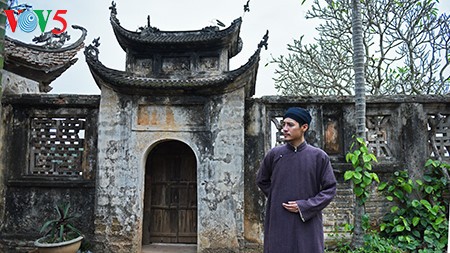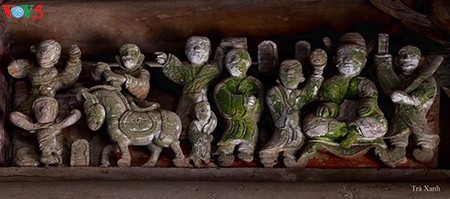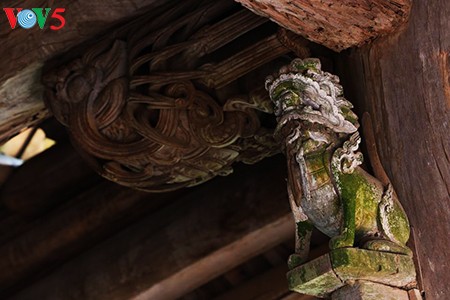(VOVworld) – A Vietnamese village’s communal house is of symbolical significance and filled with historical stories illustrating villagers’ aspirations through carving features.
 |
| (Photo: My Tra) |
A communal house is a sacred place to honor the village’s Tutelary God, the village’s founders, or heroes who sacrificed their lives for the locals or the nation.
In the northern delta, there remain many ancient communal houses including Thuy Phieu in Hanoi, built in 1531, Lo Hanh in Bac Giang province, built from 1566 to 1577, and Tay Dang in Ba Vi, Hanoi built in the 16th century.
Researchers say beautiful, large-scale communal houses were built when the national economy and society developed. The bigger a communal house and the more beautiful its architecture, the greater its prestige.
Folklorist Le Quang Ngoc says: “I have traveled to many areas and realized that thriving villages have larger communal houses which are situated at the center, within a spacious ground, and without roads surrounding. These communal houses are built with rows of big pillars and the inside compartments are larger.”
The architecture of Dong Ky village communal house is considered one of the most typical in the northern delta. Dong Ky communal house is made entirely of wood and based on the style of the stilt house of the ancient Muong ethnic minority people.
The biggest compartment is roofed in a style that four roofs stretch out widely to embrace the earth. But the roof doesn’t look heavy thanks to curved spear heads rising into the sky. This type of roof is the highlight of Vietnamese communal house architecture.
The statues, parallel sentences, horizontal lacquered boards, and door frescos of many communal houses tell the history of the villages.
 |
| Inside the communal house, there are many other carvings describing daily life activities of Vietnamese farmers. (Photo: My Tra) |
The communal house of Diem village in Bac Ninh province was built in late 17th century. Its door fresco with its sophisticated carvings of a dragon, clouds, and 4-petal flowers stands out in the biggest compartment. Inside are many other carvings describing daily life activities, including eight fairies, country girls, and old men playing chess. Their daily activities reveal the simple aspiration of villagers to have a peaceful life, according to painter Dinh Tien Hai, who is also a researcher of communal house architecture.
 |
| (Photo: My Tra) |
Hai says: “The painters of these carvings are farmers with a strong attachment to rural life. The carvings reflect their agricultural thinking but are full of vitality. This shows that in the past artisans were not shy about putting their daily activities into the decorative painting and carvings in their communal houses.”